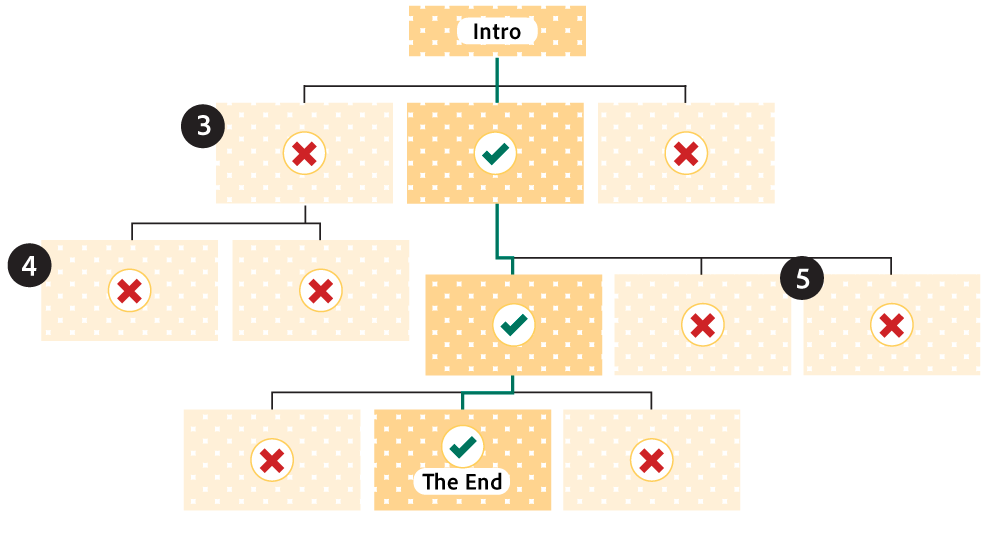One of the more exciting activities you can make in PlayPosit is a branching scenario, a video version of the Choose Your Own Adventure books from the 1980’s and 90’s. After watching a segment of a video, students are presented choices what to do next. That choice leads to another video followed by another choice, and so on down a custom path until they reach the end.
Branching scenarios are best suited for problem-solving in complex situations and/or to create a safe place to practice skills that would otherwise be dangerous, such as patient care simulations or lab simulations.
Arguably, the greatest challenge in making branching scenarios is keeping track of so many paths. To that end, we’ve designed this virtual choice map to diagram how one choice leads to the next.
How to use the Choice Map
Each rectangle on the choice map represents a scene of video. Using post-it notes, write out each scene’s number (see below), title, and a phrase/sentence describing what happens.
 Scene numbers – each square has a scene number on it. Scenes are numbered sequentially left to right, and include the scene numbers that lead to it, separated by periods. For example, scene 3.2.1 is the scene that occurs after people have selected: choice #3, followed by choice #2, and this video is choice #1. You will use these numbers when you build the scenario in PlayPosit.
Scene numbers – each square has a scene number on it. Scenes are numbered sequentially left to right, and include the scene numbers that lead to it, separated by periods. For example, scene 3.2.1 is the scene that occurs after people have selected: choice #3, followed by choice #2, and this video is choice #1. You will use these numbers when you build the scenario in PlayPosit.
Creating a 3-decision-point branching scenario
 Identify your learning outcome(s) for this activity. Each decision point should be a step in achieving that outcome.
Identify your learning outcome(s) for this activity. Each decision point should be a step in achieving that outcome.- Add post-it notes for the correct path of choices (assuming there is only one correct answer).
- Return to your first decision point and add distractors.
- Add the next set of choices branching from the distractors. Choices should either be dead ends or move users to another branch.
- Move down to the second choice on the “correct” branch and add 1-2 distractors and their subsequent branches.
- Repeat this process down the tree until all branches have been resolved.

